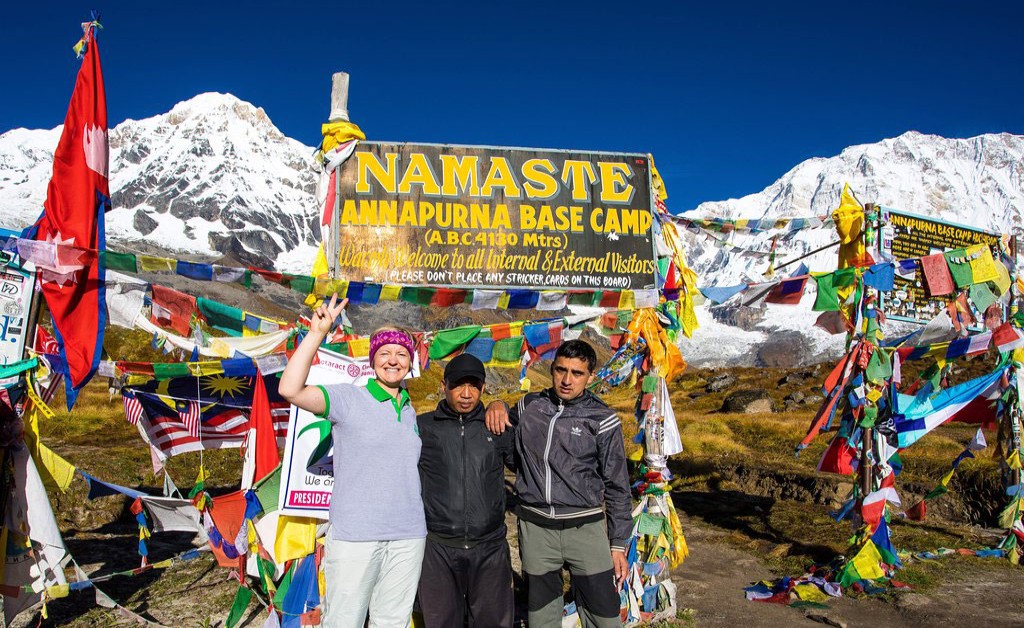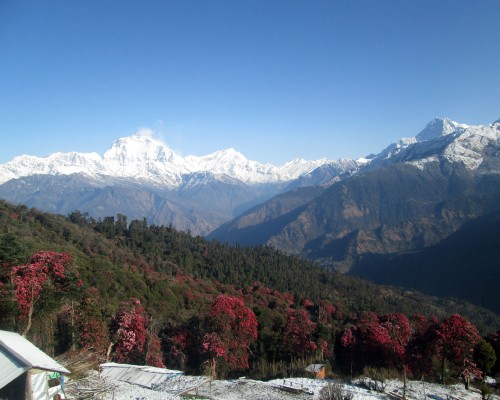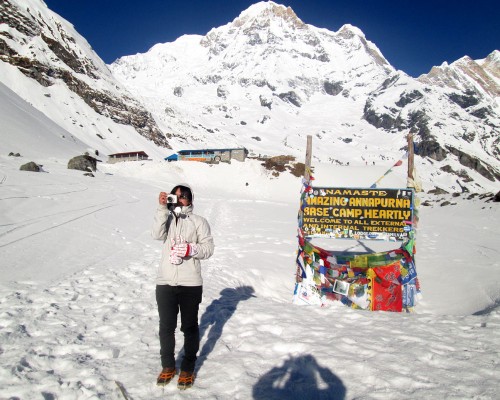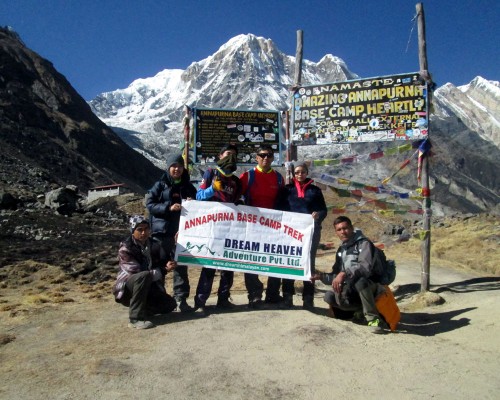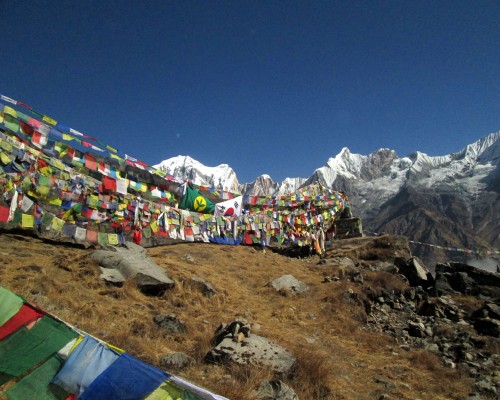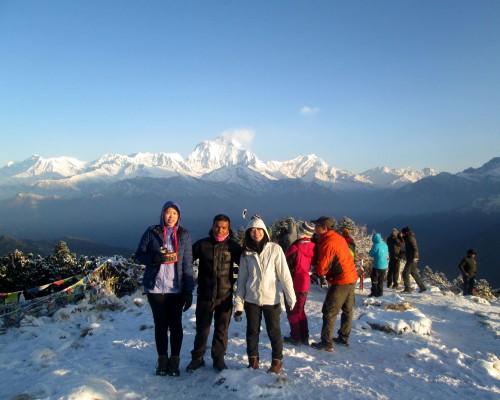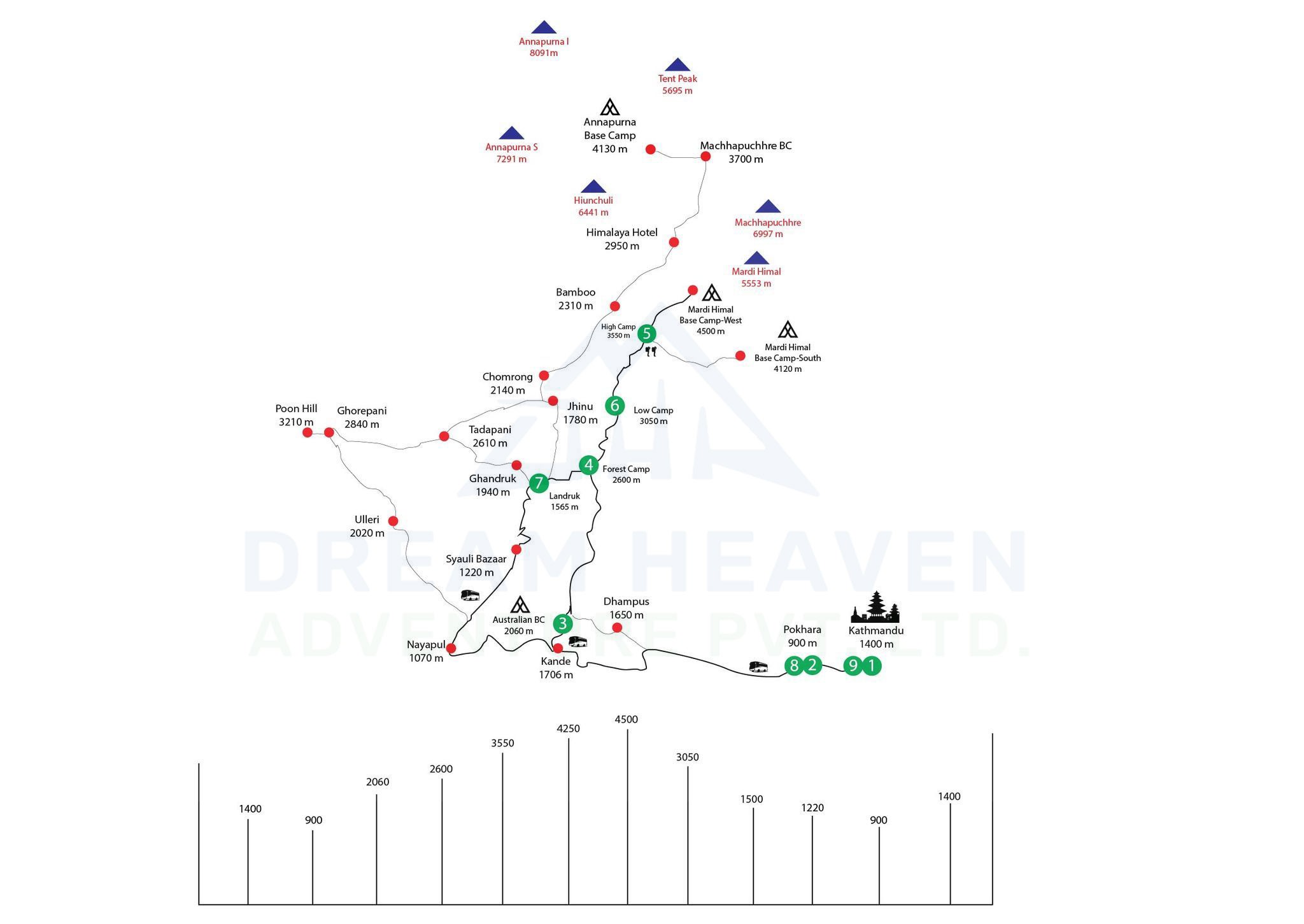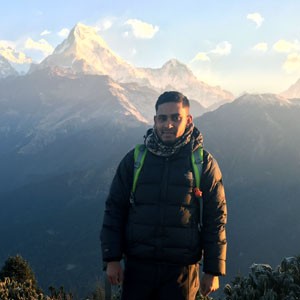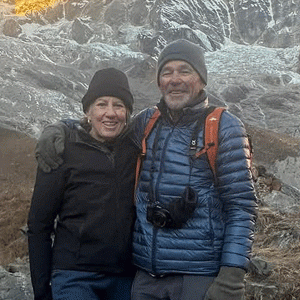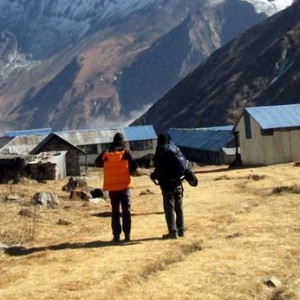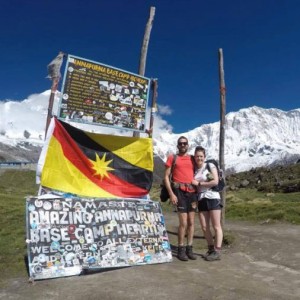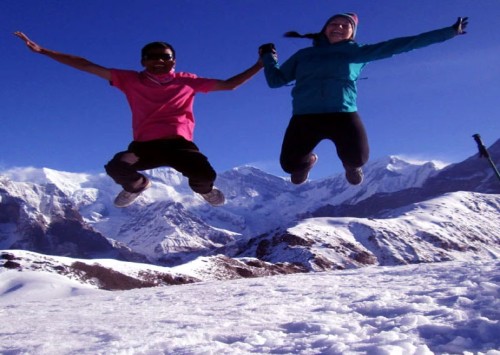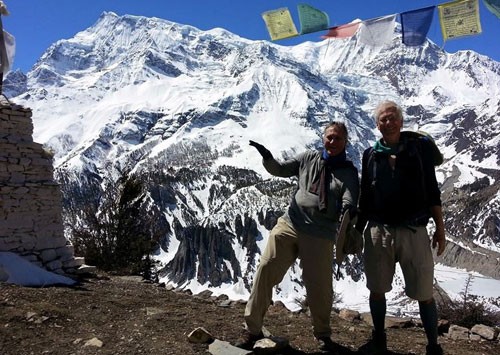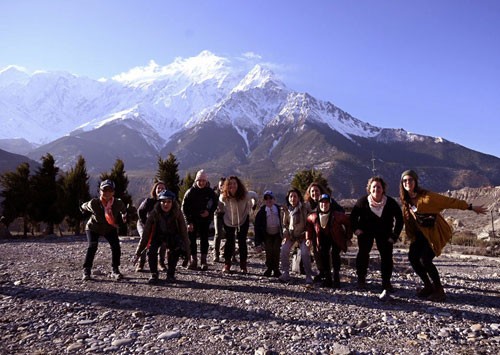Accommodation and meals during the Annapurna Base Camp Trek
During the 10-day trek, you'll get three-star hotels in Kathmandu and Pokhara and twin-sharing rooms on the trek route for eight days.
Normally, the twin sharing rooms are what the trekker accommodates during the trek. The twin-sharing rooms offer attached bathrooms in lower regions. However, in higher places like the base camp, you've to adjust to common toilets, which are clean and hygienic.
You'll get neat blankets, pillows, and a tidy room. But for extra warmth, you can carry a decent sleeping bag also.
Every tea house has communal dining where everyone staying in the tea house dine. However, the dining rooms are wide, clean, and the fire oven heated.
Annapurna Base Camp Trek via Poon Hill is a well-established trekking destination. It means that the tea houses provide plenty of meal choices, that too fresh, healthy, hygienic, and good taste.
During the ABC Trek via Ghorepani and Poon Hill, you'll get 10 breakfasts, 10 lunches, and 9 dinners. However, after completing the trek, you'll get a farewell dinner in Kathmandu with our manager.
Your typical breakfast menu includes porridge, puddings, chapati, Gurung bread, toast with jam, honey, butter, potatoes, hashed brown eggs, and omelet, etc. With breakfast, you'll get a hot drink option of masala tea, black tea, coffee, or hot chocolate.
Lunch will be at the tea house midway through the trek each day. The typical lunch menu includes Nepali Dal Bhat, the most complete meal with cooked rice, green veggies, lentil soup, and pickles. You can order dumplings, noodles, pizza, burgers, fries, spaghetti, Tibetan stew, fried rice, etc. You'll also have an option of one hot drink with lunch.
Also, the typical dinner includes the meals from the lunch. However, with a handful of options, you can choose a different dinner meal than what you had for lunch.
Annapurna Base Camp Trek Permits
For the ABC trek, you'll need an Annapurna Conservation Area Project Permit (ACAP). Previously, trekkers used to buy TIMS cards, which now is not necessary.
We'll buy this permit for you at no additional cost. Your trek guide keeps the trek permit throughout the trek to check in and check out at the permit offices.
To issue this permit, we'll need the following documents from your side:
- Copy of valid passport
- Two passport-size photo
10 days Annapurna Base Camp Trek Cost
The price we give you during booking is the standard cost of Annapurna Base Camp Trek via Poon Hill. However, with a change in preferences, the trek cost also changes.
Here's how the trek cost gets spent throughout the trek:
- Two-way plane ticket (Kathmandu-Pokhara and Pokhara-Kathmandu)
- All ground transportation on a private car/jeep
- All accommodation and meals as per itinerary
- Trek guide and porter's salary
- Annapurna Base Camp Trek Permits
- Administrative and logistic cost
If you ask for additional preferences other than those mentioned in the itinerary, the trek cost increases. Here are possible preferences that you can choose:
- Private guiding
- Single rooms for accommodation
- Amenities like hot water shower, internet, and hot drinking water are all included in the trek cost
- Trip extension after returning to Pokhara
- Additional days on the trek due to poor weather or health issues
Annapurna Base Camp Trek Difficulty
Annapurna Base Camp Trek is moderate-grade trekking. It means that the trekking route is easy at lower altitudes and somehow not-so-easy at higher regions. However, even for beginners, this trek is the best.
The base camp itself sits at 4,130 meters, making it the lowest altitude seated base camp. Also, 4,130 meters is the most you'll reach on this trek. Moreover, there are no glaciers or icefalls en route to the base camp. Hence, the route to the base camp is less rugged, straightforward, and more scenic.
Furthermore, the route length is short. Even on the 10-day trek, the route length is close to just 110 km. And each day on the trek, you'll trek for 5-6 hours, which isn't much.
Thus, ABC Trek is not a difficult trek.
Best time for Annapurna Base Camp Trek via Poon Hill
If you want to consider trekking to Annapurna Base Camp for ten days, Spring and Autumn are the best times. From March to May and September to November, the weather becomes favorable for trekking.
In Spring, Annapurna Sanctuary is best with rhododendron blossoms. Ghorepani and Poon Hill become elegant with vibrant blossoms and a fresh outlook with new leaves and buds. Moreover, the weather becomes clearer with no rain and overcast weather. The snow-capped mountains become elegant and mesmerizing. The temperature also remains warmer and less colder at the base camp.
Autumn in Nepal is the most rainy month. Hence, you'll notice the greenery at lower altitudes and snow-filled mountains. Also, in early Autumn, till the base camp, you'll see wildflowers and greenery. Moreover, the rain-washed pollutants make the visibility 100%, which elevates the viewing pleasure. Also, Autumn months are post-monsoon months with rain-free days.
You can also plan this trek in Winter, from December to February. The entire landscape becomes a snow wonderland. However, it'll be cold and sometimes snowy as well.
Weather and Temperature at Annapurna Base Camp
While trekking to Annapurna Base Camp via Poon Hill, you'll get amazed by the change in the landscape and the ecosystem. You'll start the trek from the steamy lowlands of Birethanti and culminate at the snowy wonderland of Annapurna Base Camp. You'll experience multiple weather patterns and changes in temperatures.
Here, we'll give you a brief idea of what the weather remains in Spring, Autumn, Summer, and Winter in Annapurna Base Camp.
Spring (March, April, and May)
Spring is among the most liked time of the year for 10 days Annapurna Base Camp Trek via Poon Hill. The beautiful weather makes the trek wholesome. And with the warm temperature, you'll feel cozy.
The lower regions experience some warmth with an average temperature of 30˚C in Pokhara. However, Ghandruk, Ghorepani, Poon Hill, and Chhomrong remains fairly cool with temperatures around 18˚C. The temperature at Annapurna Base Camp in March, April, and May averages 4˚C in daytime to -7˚C in nighttime.
Autumn (September, October, and November)
Autumn months are the most pleasing months for Annapurna Sanctuary Trek. As Autumn progresses, the temperature decreases. However, the weather becomes one-of-a-kind for trekking.
The temperature at Annapurna Base Camp in September averages 3-4˚C in the daytime. Likewise, at nighttime, the temperature drops to -10˚C. In months like the end of October and November, the daytime temperature at Annapurna Base Camp drops to -2˚C. And nighttime temperature drops even below -15˚C.
Summer (June, July, and August)
Summer is not a good time for Annapurna Base Camp Trek via Poon Hill. If you're planning, early June can still be an option. However, the later months get rainy, landslides, and overcast, which are not the best to trek.
The temperature rises at lower altitudes to 34˚C. At the base camp, the temperature averages to 5-6˚C.
Winter (December, January, and February)
Despite the cold, Annapurna Base Camp Trek in winter can also be an option.
The temperature at the base camp freezes even during the daytime. The nighttime temperature drops to -17˚C. January would be an ideal month for ABC Trek because of less snow and lesser cold. Also, the mountains look beautiful.
Altitude sickness, symptoms, and precautions
The good thing about trekking to Annapurna Sanctuary, including the base camp, is very few trekkers experience altitude sickness. First, we've designed our Annapurna Base Camp Trek 10-day Itinerary in a way that you'll gain altitude gradually each day. Trekking to Poon Hill and Ghorepani ensures your complete acclimatization before hiking to the base camp. Moreover, the base camp is at 4,130 meters, which is safe and free from the risks of altitude sickness.
However, we can't still rule out the risk of altitude sickness. Altitude sickness symptoms appear when you trek past 3,500 meters altitude.
Here are some symptoms of altitude sickness:
- Headache
- Nausea, vomiting, and diarrhea
- Loss of appetite and sleep
- Shortness of breath, blurry vision
If you experience a few of these symptoms, immediately report it to your trek guide. Your trek guide assesses the situation and takes good care.
Here are some measures you can practice to avoid altitude sickness during this 10-day trek:
- Frequent rehydrate with oral rehydration solution
- Eat adequate meals, and get proper sleep
- Avoid coffee, energy drinks, smoke, and alcohol during the trek
- Cover your body parts against the wind
Another way to prevent altitude sickness is by consuming Diamox. It's a drug that minimizes the risk of altitude sickness in your body. However, we don't recommend you to consume such. Please consult with your doctor before consuming this medicine.
Travel Insurance: A must
International travel insurance is a must while trekking in Nepal. If you fail to provide proof of your travel insurance, we may exclude you from the group or cancel the booking. Trekking without travel insurance puts you and us at risk.
Travel insurance is a must if you need a helicopter evacuation during emergencies. For example, if you get fractures or altitude sickness, the safest descent is the helicopter. The helicopters hesitate to fly if you don't have travel insurance. Hence, to get an on-time helicopter in such times, travel insurance is a must. The good part is you'll reach the hospital on time, and your insurance bears all charges of helicopter rescue and hospitalization bills.
More than emergencies, travel insurance also compensates for the loss and damage of personal stuff, trek gear, and gadgets.
You must provide us with a copy of your insurance proof so that we can use it during emergencies to send helicopters on time.
Packing list for Annapurna Base Camp Trek
A 10-day trek requires adequate trekking gear, clothes, and other stuff. Since you'll get a trek porter to carry your backpack (of 10 kg), you can bring the things that'll be of need while trekking.
The packing list depends on the time you plan this trek. However, here's a short overview of what to pack for Annapurna Base Camp Trekking in 2025/26.
Upper Body
Down jacket, fleece, and thermals, and T-shirts
Wind/Waterproof jacket
Beanie, glove, hat, and neck buff
Fleece jacket or pullover
Lower Body
- Trekking pants (three)
- Thermal layer
- Decent trekking boot (waterproof), Woolen socks (3-4 pair), ankle support, etc.
- Undergarments (wears)
- Ice spikes (for winter/early March)
Other essentials
- Gadgets (camera, binoculars, power bank, etc)
- Snacks
- Toilet paper, wet wipes, toothbrush, toothpaste, sunscreen, and other skincare products
- Passport and other identification documents
- Nepali currency (5-10k for personal expenses)
Since you'll get a duffle bag to put this stuff in, you'll still need to bring a light daypack of 20-30 liters.
For a detailed guide, you can read our Packing Guide for Trekking Adventure in Nepal blog
